What Animals Live In The Amazon River?
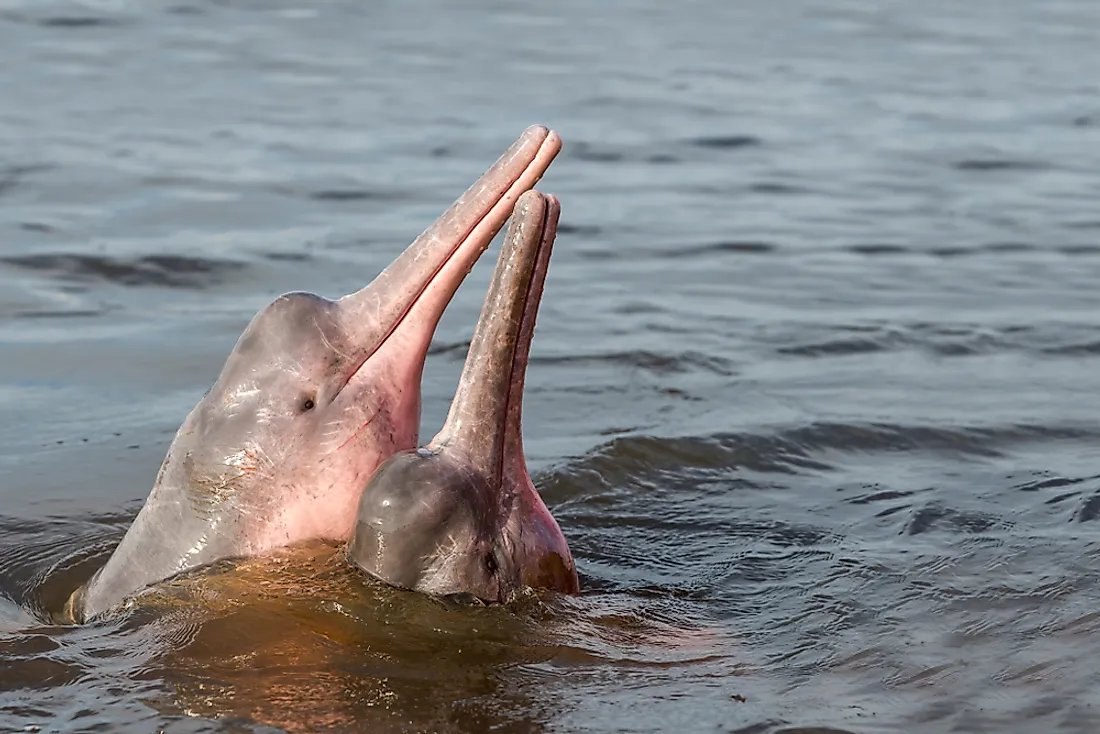
As the world’s second-largest river, the Amazon River and its tributaries thrive with various forms of life. While the Amazon River supports the dense and extensive Amazon rainforest that is the world’s largest and most biodiverse tract of tropical rainforest, the river, and its branches are also home to a great diversity of aquatic and semi-aquatic fauna. Some of the most notable residents of the Amazon River have been mentioned below:
Black Caiman
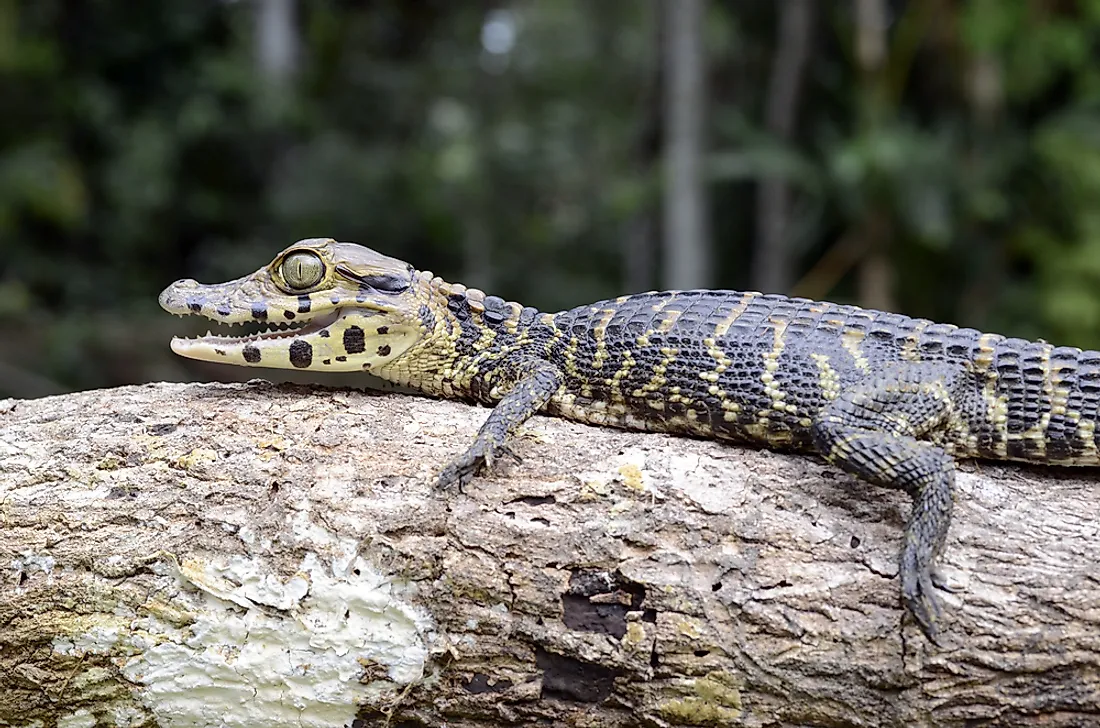
Melanosuchus niger is a large crocodilian that lives in the Amazon basin’s slow-moving rivers and lakes. It is also found in the seasonally flooded savannas in the region. This massive carnivore can grow up to 5 m in length and is the Amazon River’s largest predator. Birds, mammals, fish, and reptiles constitute its food base. In the past few decades, the black caiman was almost on the verge of extinction due to indiscriminate hunting by humans for its skin. Conservation strategies were then launched to protect the species. Today, the black caiman population has recovered to some extent and it is listed as a Conservation Dependent species.
Arapaima
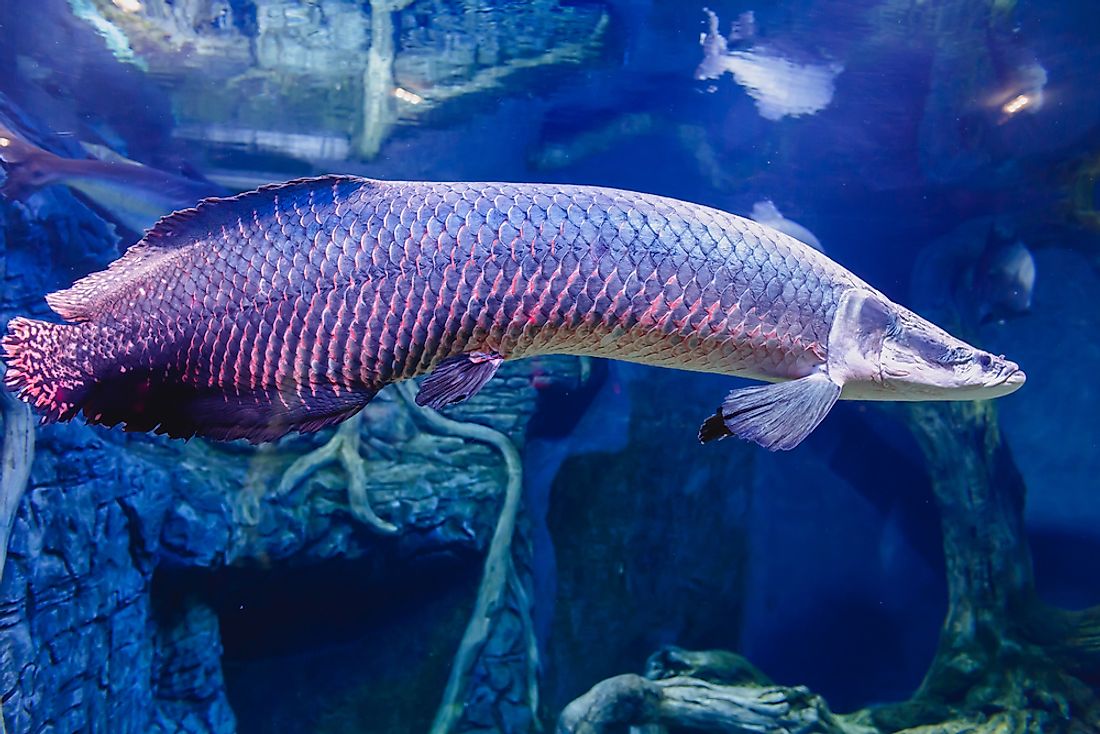
The Arapaima are gigantic carnivorous fish living in South America’s Amazon and Essequibo basins. These fish can grow as long as 3 m and weigh around 90 kg. These fish are torpedo-shaped and have large blackish-green scales with a mineralized hard outer layer. The Arapaima is dependent on surface air to breathe. They feed on smaller fish, small terrestrial animals that move close to the shore, crustaceans, etc. The Arapaima is heavily exploited by humans. Its tongue is processed to prepare traditional medicines. Nail files are prepared using their bony scales. Although fishing for Arapaima is heavily regulated, it is believed the fish has depleted or overexploited populations.
Electric Eel
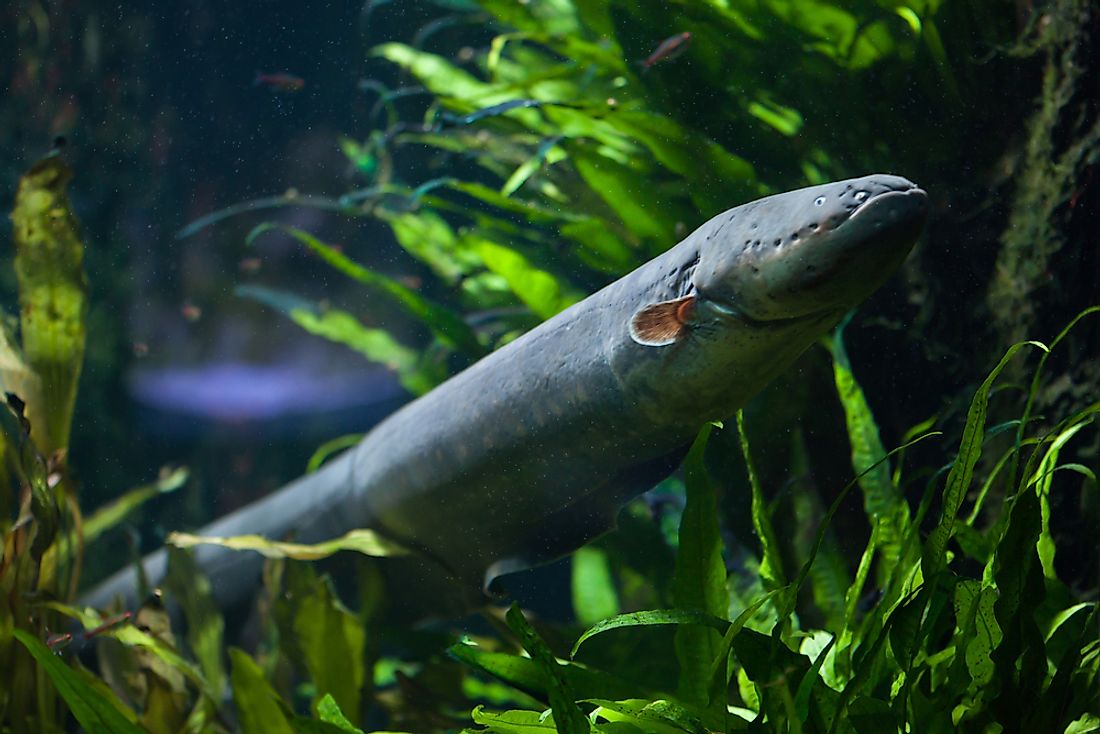
Electrophorus electricus is an electric fish that despite its name, is not an eel but a knifefish. This fish has a long, cylindrical body and can grow to about 2 m. It is the largest Gymnotiformes species. Electric eels have a dark gray-brown dorsal color and a yellow to orange colored abdomen. Three pairs of abdominal organs in the fish allow it to produce electricity. Both low and high voltage electric discharges are generated by the fish. The former type of discharge is used by the electric eel to sense the environment while the latter type is used to detect and stun prey. In the Amazon River basin, electric eels are found in the muddy river bottoms or stagnant waters where they feed on invertebrates, small mammals, and fish.
Amazon River Dolphin
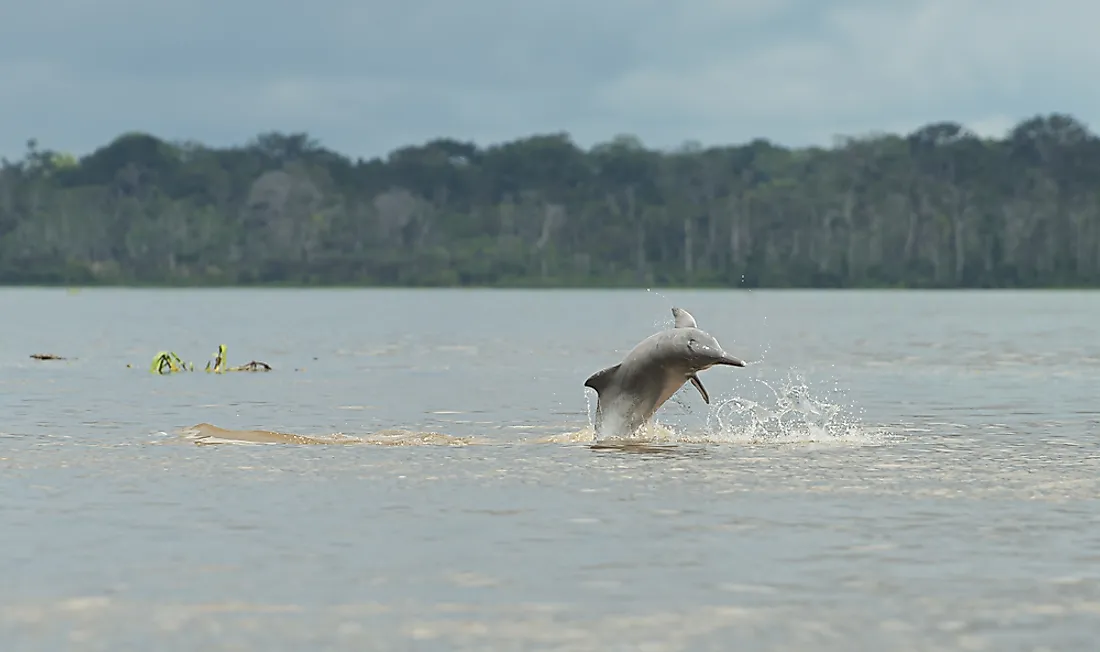
The Inia geoffrensis is endemic to the Amazon River basin where its three subspecies are found. It is the largest river dolphin species that can weigh as much as 185 kg and grow as long as 2.5 m. These dolphins are noted for the pink color of adults which is more prominent in males. Males of this species are significantly longer and heavier than females. These pink river dolphins have a wide prey base including 53 species of fish, freshwater crabs, and river turtles. Hunting and population pressures threaten the survival of the Amazon River dolphin.
Giant Otter
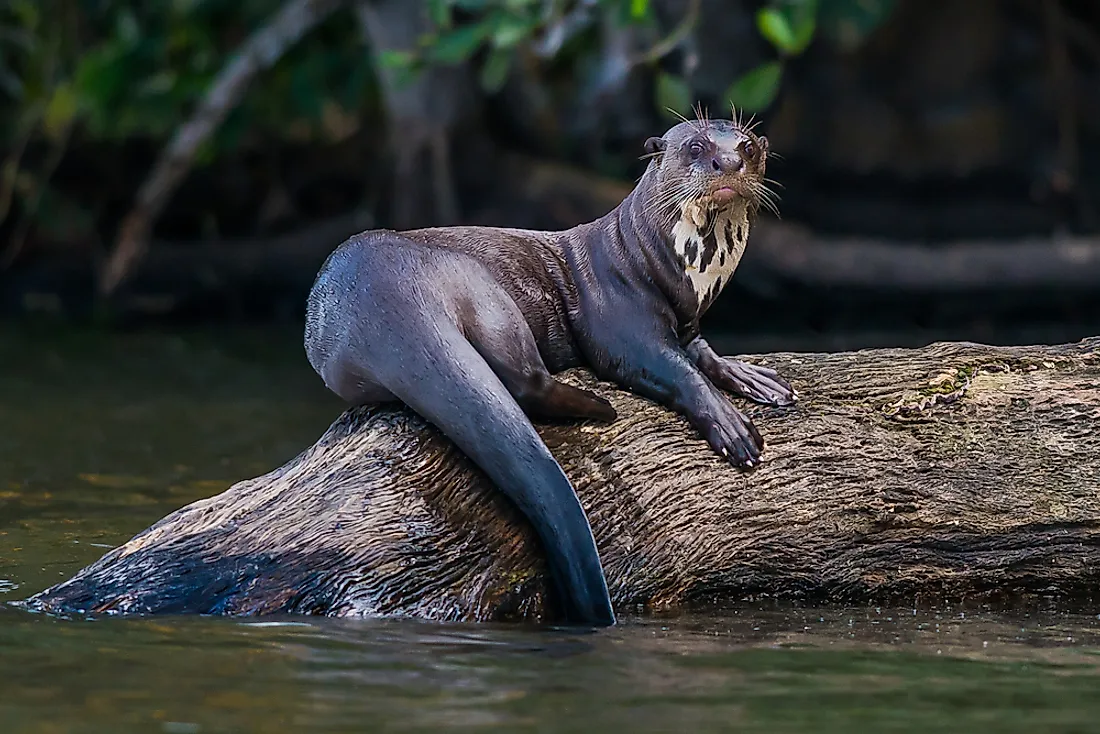
The Pteronura brasiliensis is a carnivorous mammal living in the waters of the Amazon. As the name suggests, it is the longest member of the weasel family. It can grow up to 1.7 m long. Like other mustelids, the giant otter is also highly social and lives in family groups of 3 to 8 members. The giant otter is active during the day. It primarily feeds on fish but turtles, snakes, small caimans, and crabs are also occasionally eaten. The giant otter is the noisiest otter species and often exhibits territorial behavior. Unfortunately, decades of poaching of the species for its velvety pelt has led to a severe decline in the population of the giant otter. Today, it is labeled as “Endangered” by the IUCN.
Green Anaconda
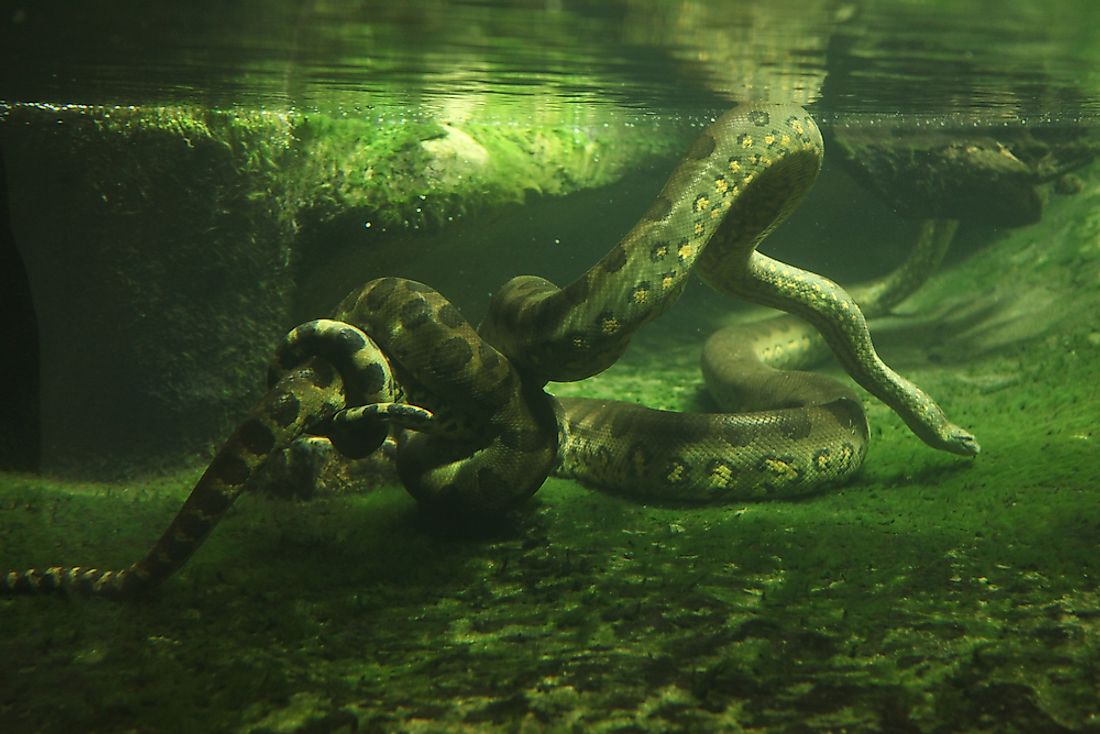
The Eunectes murinus is a non-venomous boa species that is the heaviest and one of the longest species of snakes found in the world today. This snake can grow up to 5.21 m in length and weigh as much as 30 to 70 kg. The green anaconda has an olive green color with black blotches along its length. The sides of the head usually exhibit orange-yellow striping. These snakes inhabit the slow-moving streams, marshes, and swamps of the Amazon basin. Although they are slow on land, they can move fast in the water. They wait for their prey just below the water surface and strikes out as soon as prey is detected. They then coil around the prey’s body to constrict and suffocate it to death. The green anaconda consumes a wide variety of prey including mammals, birds, fish, reptiles, etc.
Pacu
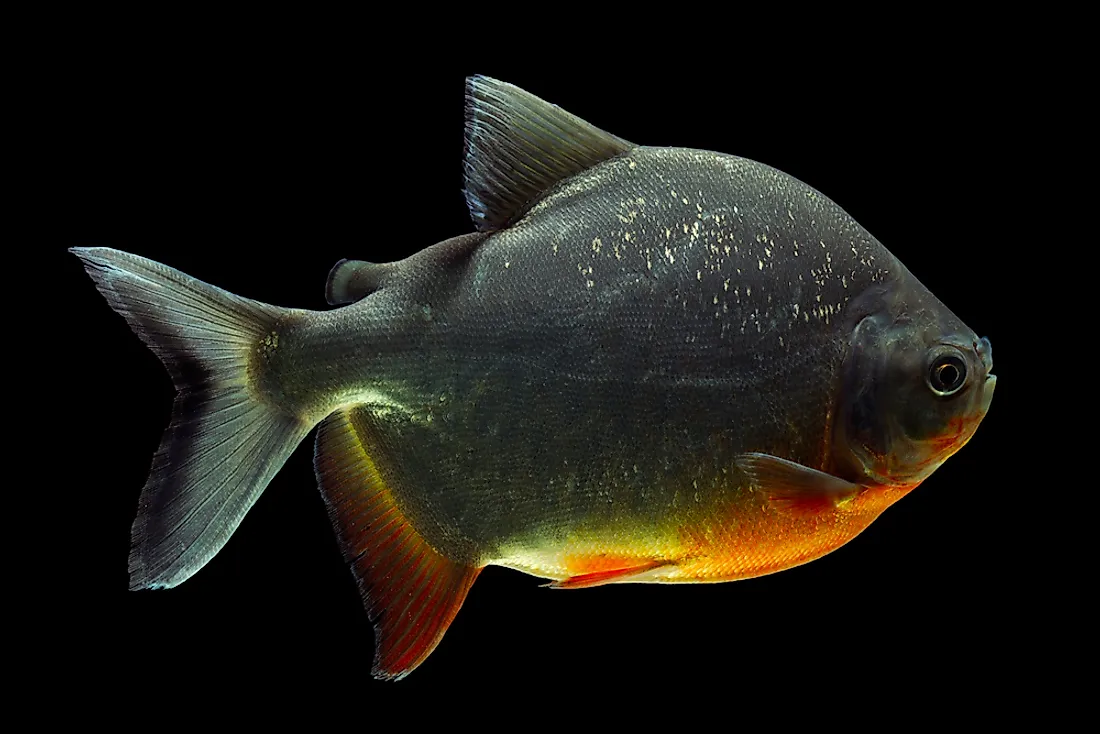
The pacu is a group of several species of omnivorous freshwater serrasalmid fish found in the waters of the Amazon. Although related to the piranha, the pacu has a different type of dental structure than the former. The teeth of the pacu are uncannily similar to that of humans. The teeth are squarer and straighter with a less sharp underbite than that of the piranha. The pacu are also more dependent on plant material for their diet rather than flesh. Pacu also grows larger than piranhas. Specimens that are over 1 m long and more than 40 kg in weight have been found. Pacu has also been introduced to other parts of the world. Pacu are often sold to home aquarium owners as "vegetarian piranhas”. These fish are also caught in game fishing and commercial fishing operations.
Piranha
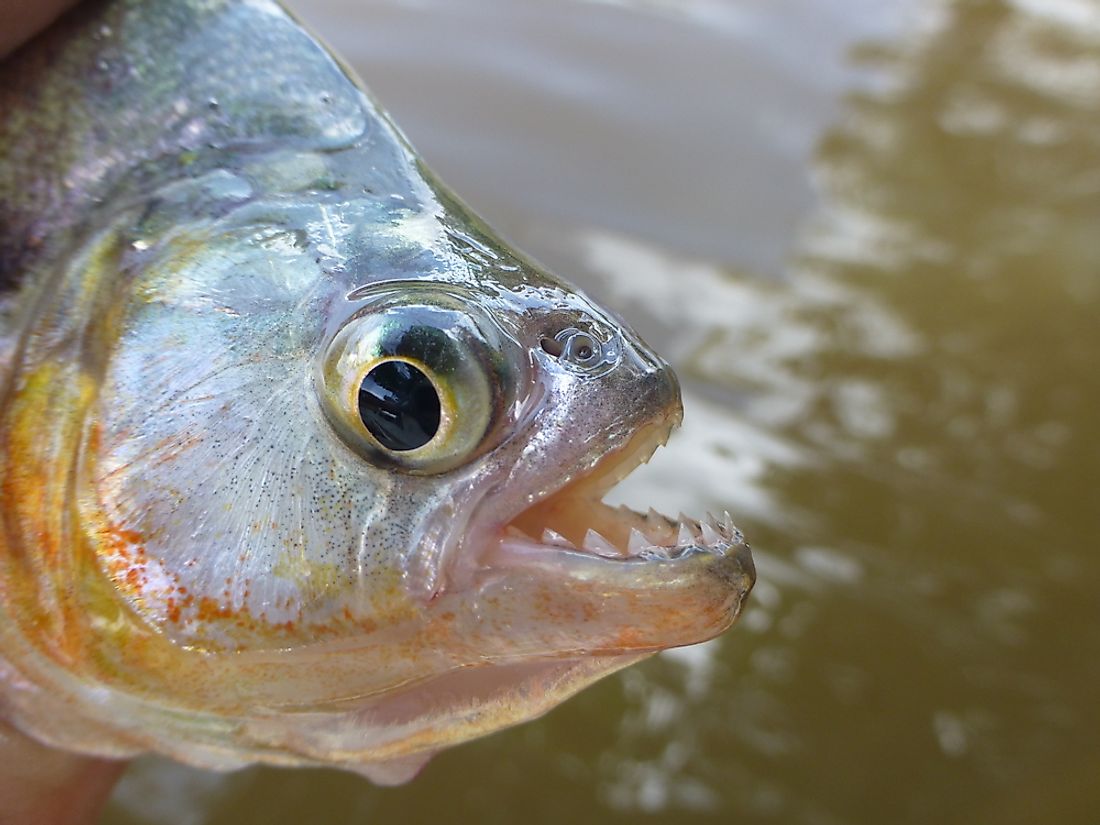
Nearly everyone is familiar with the name piranha. It is a group of freshwater fish living in the South American rivers, lakes, reservoirs, and floodplains including the Amazon River basin that is the subject of many horror tales and legends. It is believed that anyone including humans or animals entering water infested by piranhas is bound to be attacked by these fish and consumed alive. However, actual research mentions that such a belief is quite overrated. Although few human deaths have been associated with piranha attacks, the majority of such attacks result in minor cuts and injuries. Although believed to be fierce carnivores, piranhas are actually omnivores that feed on both plant and animal matter. Piranhas have one of the most powerful bites among all bony fishes.











